Thread subject: Diptera.info :: Tephritidae, Ceratitis capitata?
Posted by lynkos on 20-10-2005 06:50
#1
Yesterday it was obviously "Fly Day" in my holm oak woods and in the rare moments of sun I managed to get a few interesting pics. The first I've tentatively identified as the Tephritidae, Ceratitis capitata. How near have I got?
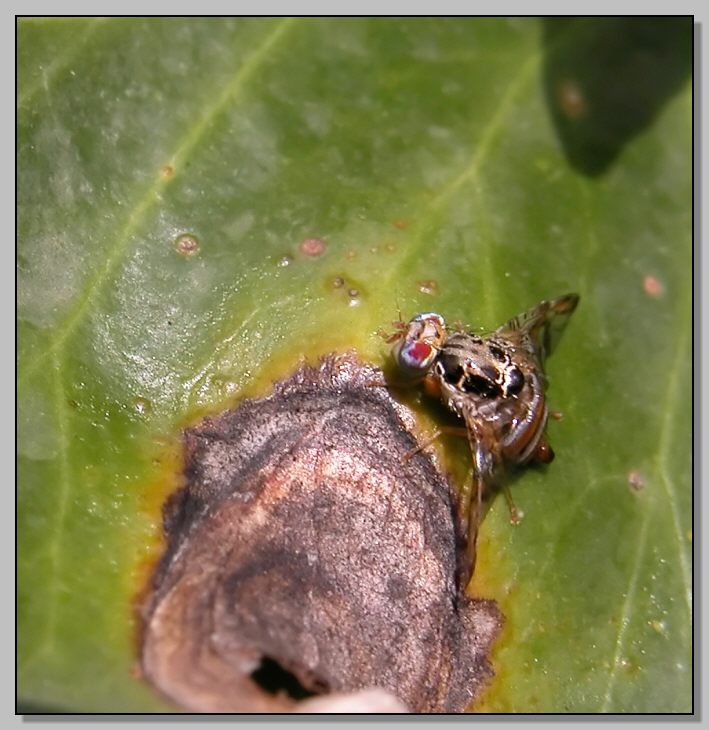
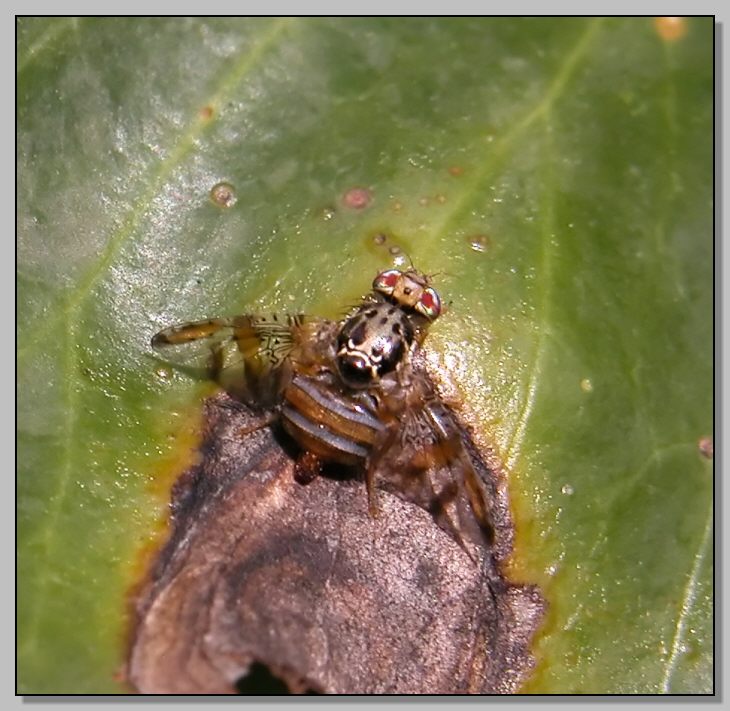
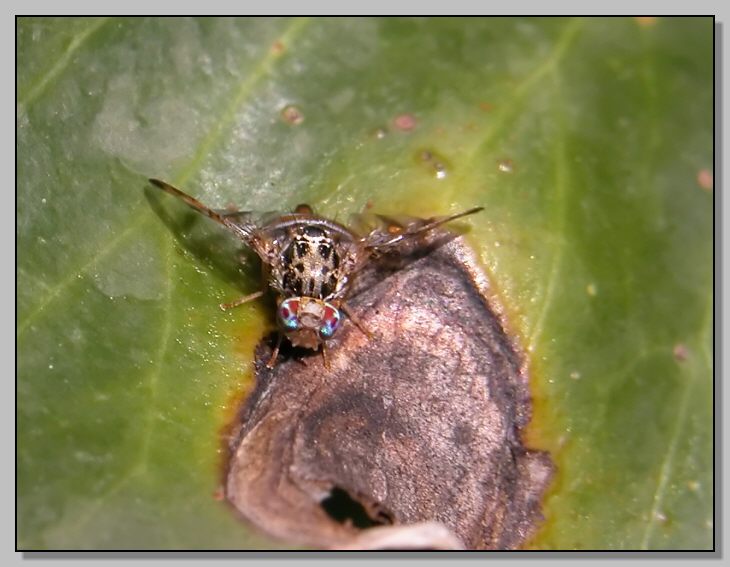
Thanks, Sarah
Posted by John Smit on 20-10-2005 07:23
#2
Hi Sarah,
Your id is perfect! This is the only 'wild'
Ceratitis we have in Europe.
Posted by lynkos on 20-10-2005 08:19
#3
Woww...!!! One spot on is a great way to start the day :o, Sarah
Posted by paqui on 20-10-2005 17:50
#4
well, i?m not sure about the correct localities where it?s "wild", I can only tell it?s a real nightmare for orange trees. It appeared suddenly and now there are lots of them (mediterranean coast)!
really good pics! :)
Posted by Andre on 20-10-2005 20:04
#5
Yes, it's a well-known pest indeed.
A few years ago I found an adult specimen on my portugees (biologically grown ;) ) tangerine, at home in Tilburg the Netherlands.
Very beautiful, this pest!
Posted by lynkos on 21-10-2005 08:00
#6
Yes, it is such a beautiful fly and though I know it can be a menace to man and his actions, I choose to think of it as just another beautiful creature ;) Sarah
Posted by Nikita Vikhrev on 30-01-2006 23:13
#7
Thailand, Pattaya.
Same?
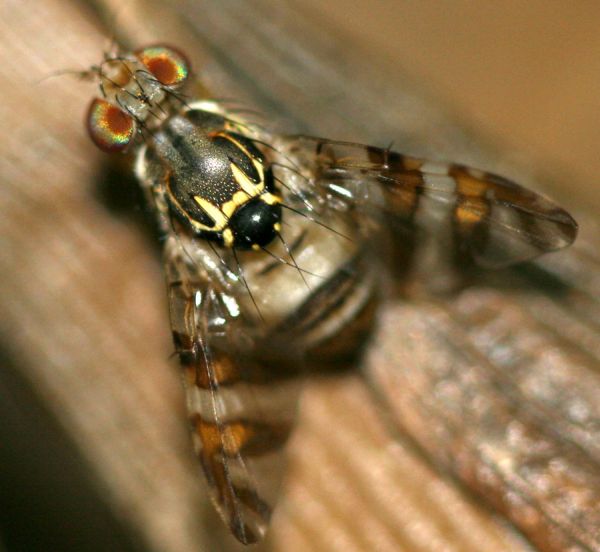
Posted by Paul Beuk on 31-01-2006 08:37
#8
Ceratitis may well be right but hte patterns are different.
C. capitata as above, for example, has a yellowish anterior margin of the scutellum and the is no reticulation in the basal half of the wing.
Posted by Nikita Vikhrev on 31-01-2006 12:51
#9
Thank you Paul.
So at least Tribe CERATITINI, probably Ceratitis.
According checklist of Australasian Diptera, there is only one Ceratitits in region:
"capitata Wiedemann, 1824: 55 (Tephritis). "India Orient"; widesp. W Australia, Hawaiian Is [introduced]; USA [introduced], pantrop."
Also there is one widespread CERATITINI fly:
CERATITELLA tomentosa de Meijere, 1914b: 207. Indonesia (Java); Australia (Qld); widesp. Oriental Reg.
Posted by John Smit on 01-02-2006 08:48
#10
Hi
This last one is no
Ceratitis but rather an
Acroceratitis.
Easily recognised ba the lack of small black dots in the basal half of the wing, present in
Ceratitis.
Though there is a monograph on the Tephritidae of Thailand and surrounding countries, I seem to be unable to identify the species. It is undoubtely closely related to
A. histrionica (de Meijere, 1914). But I will need more details, for instance a profile of the face, in order to identify it properly.
John
Edited by John Smit on 01-02-2006 08:49
Posted by Nikita Vikhrev on 01-02-2006 17:16
#11
To tell you truth I was vary much disappointed by Paul's reply. Wellknown fruit pest better for insecta photocollection than modest and hurmless Oriental Tephritid. I was wrong and Paul was right, the situation rather predictable, alas!
Thank you Paul and John.
Another image of Acroceratitis histrionica? attached.
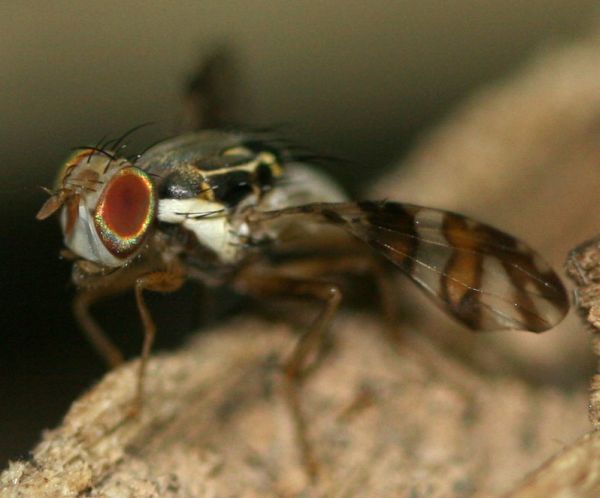
Posted by John Smit on 02-02-2006 13:22
#12
Hi Nikita,
Thanks for the second photo.
Exactly what I asked for, but still I am not able to identify it, sorry.
Perhaps I need a more recent key or one of the ajacent areas.
John
Posted by John Smit on 02-02-2006 13:23
#13
Hi Nikita,
Thanks for the second photo.
Exactly what I asked for, but still I am not able to identify it, sorry.
Perhaps I need a more recent key or one of the ajacent areas.
John
Posted by Nikita Vikhrev on 02-02-2006 14:49
#14
Thank you John.




